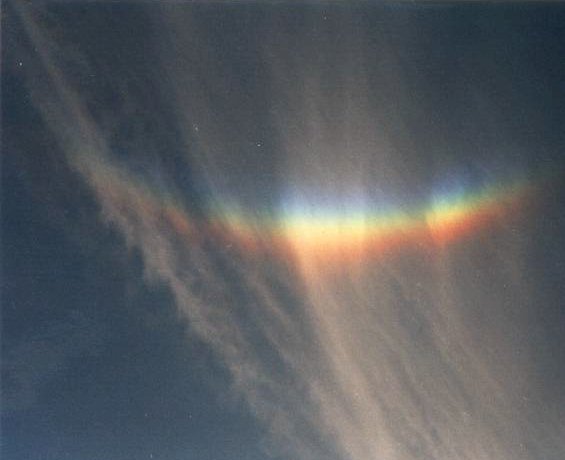- Crystal orientation:
- Basis horizontal
- Path of light:
- 1-3
- Occurrence:
- frequently
20-30 days a year
EE 11

Description:
Circumzenithal arcs are one of the most beautiful and most colourful halos. They can be as colourful and bright as a rainbow or even brighter. For this reason they have often been taken for rainbows. But contrary to a rainbow which forms a circle around the anthelic point, a circumzenithal arc is an arc around the zenith. Only the part pointing towards the sun is visible. Normally a quarter of a circle appears, but in special cases you can see half of it. Its vertex is at about 48° above the sun.
At a sun elevation of 32 the circumzenithal arc disappears in the zenith. When the sun is higher than 32°, it cannot arise. At a sun elevation of 22.1° it has its greatest brightness. Thus it is observed in most cases at sun elevations between 15° and 25°.
Formation:
Just like the parhelia, circumzenithal arcs are caused by horizontally orientated plate-shaped ice crystals which are floting in the air. But to generate a circumzenithal arc, the light enters the base face of the plate and leaves a prism face. As the prism faces are perpendicular to the base, the refraction angle is 90°. When there are parhelia, there is a high possibility for a circumzenithal arc to be visible, especially at sun elevations between 15° and 25°. Unfortunately very few people know the circumzenithal arc, although it appears as nearly as often as a rainbow. Probably the main reason for this is the fact that you have to look almost vertically upward to see it.


